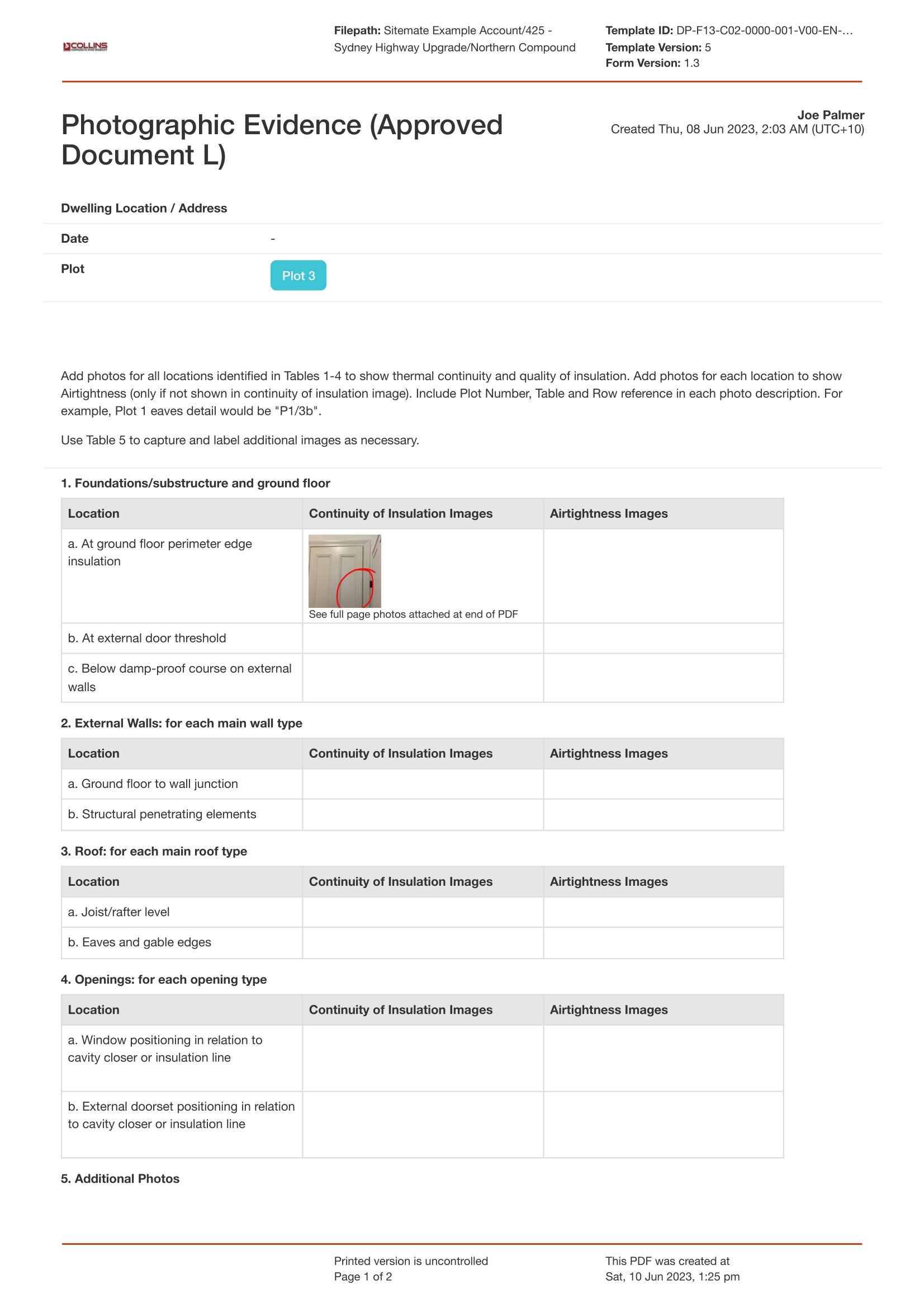Dashpivot article page – Part L 2023 U values

Part L U values (2023 and more)
What are U-Values in the Part L Regulations (2023 updates)?
Part L U-values, otherwise known as thermal resistance is the rate of transfer of heat through a material, structure or matter and it is expressed in W/m²·K. The lower the U-value is, the better is its insulation properties, meaning a lower rate of heat transfer. Materials with low U-values, most especially lower than the standards set in Part L are highly encouraged as they are better insulators. The U-value of materials are varying depending on its thickness, thermal conductivity, and density. Upon installation, the U-values may be compromised due to thermal bridging, installation quality, and temperature difference between the inside and outside.
The Part L U-values standards set in Part L Building Regulations are applicable to all types of buildings, both new and existing dwellings, and both new and existing non-dwellings. Architects and designers should ensure that the insulation materials in the buildings should at least meet be lower or more than the standards.
There are, however, exemptions in the strict U-values to be followed in Part L regulations. Buildings that have special cultural or architectural importance have more relaxed U-value requirements in order to keep their integrity. They are usually the buildings officially listed in the special or historic ones, buildings that are in conservation areas, monuments, and buildings that were constructed before 1919 that used traditional materials and methods. Relaxed values mean that if these buildings were to be renovated or upgraded, developers don’t need to meet the U-values indicated in the Part L regulations if it compromises the following: (1) the building’s appearance; (2) historic fabric that may cause damping or condensation damaging the original materials, or; (3) windows, doors, and other decorative areas that are part of the heritage. Prior to construction, check with the Building Control bodies for exemptions.
Part L is periodically updated so it’s important to stay updated with the latest regulations as the U-values might get stricter too to align with the UK’s environmental targets.
What are the latest Part L U-values of Common Building Components?
Note: All values are in W/m²K
Walls
New dwelling: 0.18
New elements in existing dwellings: 0.28
Existing elements in existing dwellings: 0.30
Roofs (Pitched with insulation at ceiling level)
New dwelling: 0.13
New elements in existing dwellings: 0.16
Existing elements in existing dwellings: 0.18
Roofs (Pitched with insulation at rafter level)
New dwelling: 0.13
New elements in existing dwellings: 0.18
Existing elements in existing dwellings: 0.20
Flat Roofs
New dwelling: 0.13
New elements in existing dwellings: 0.18
Existing elements in existing dwellings: 0.20
Floors
New dwelling: 0.13
New elements in existing dwellings: 0.18
Existing elements in existing dwellings: 0.25
Windows
New dwelling: 1.4
New elements in existing dwellings: 1.6
Existing elements in existing dwellings: 1.6
Doors (Glazed)
New dwelling: 1.4
New elements in existing dwellings: 1.6
Existing elements in existing dwellings: 1.8
Doors (Solid)
New dwelling: 1.0
New elements in existing dwellings: 1.4
Existing elements in existing dwellings: 1.8
What are Some Tips to Ensure Part L U-values are met?
Insulation Materials
Choose the correct insulation materials and implement techniques that are compliant with Part L. The materials should also be fire safety approved, as materials with high insulation properties also resist the spread of fire.
Installation of Materials
Even with the proper materials, if they are not installed properly, it could cause gaps, air leaks, and thermal bridging. It could reduce the performance of high-quality insulation materials.
Air tightness & Ventilation
Seal gaps in the building envelope by using proper sealants and weatherstripping. Incorporate MVHR in the design to maintain air quality and also prevent condensation to occur.
Collaborate with Professionals
Professionals can provide guidance on the proper insulation materials to be used and the appropriate installation procedures to ensure that the materials are optimized and there is less heat loss in the building envelope. Professionals will also use accredited U-Value calculators that ensure accuracy in the calculations so it’s important to coordinate with architects, designers, energy assessors, and most importantly Building Control bodies.
Testing & Certifications
Air tightness testing is a requirement for every building post-construction to see if there are any air leakages. Ensure that an accredited tester is the one performing the tests and that a certification is issued afterwards. Thermal imaging is also required to confirm that the entire building meets air tightness and Part L U-value regulations as indicated in Part L.
What are the Penalties for Non-Compliance with U-Value Targets?
There are several penalties if the U-Values of materials do not comply with the Part L and U-Values Building Regulations.
Correction Notices & Failure to Obtain a Building Approval
If the requirements are not met, the local authorities can issue a Correction Notice indicating that non-compliant elements and procedures should be fixed. Fixing can include tearing down already built elements and replacing them just so they could meet the U-values required in Part L. It’s important to coordinate with professionals prior to construction to avoid being issued a Correction Notice which can significantly delay projects and cost a lot of money.
A Building Approval is a notice indicating that the building can be occupied and sold. If the building envelope does not have insulation materials that meet the required U-values and fire safety standards, a Building Approval will not be issued.
Financial Penalties
In worst case scenarios, local authorities may issue fines for every violation excluding daily fines for buildings that don’t meet the energy efficiency standards to developers or builders who always violate the Part L regulations.
Poor Energy Performance Certificate (EPC) Result
Energy assessors may rate the buildings that don’t meet the U-values as indicated in Part L Regulations as poor. This can affect a building’s resale value and appeal to tenants. Aside from that, the building will not be eligible for green certifications or government incentives.
Where to get more details and information about the U-values in Part L Building Regulations?
More information can be found on the official government website and energy efficiency guides. It’s advisable to consult with building professionals prior to designing, during construction, and post construction to ensure that the project is compliant with Part L.
How to ensure your U-Values stay compliant with Part L using digitized forms?
You can use a centralised system for any information related to Part L and keep information such as people, equipment, codes, projects, contractors, and most importantly your Part L U-Values in a list that can be referenced inside to any of your forms and documents. You can automatically use and manipulate those values in smart documents that have formulas or for reports. You can also easily update existing lists or create new ones if ever you need to update in line with an updated Part L regulation.

Record Part L 2023 U-Values easier with this form template
You can use digitized forms to conduct your regular inspections during and post construction if the U-Values are being followed, insulation materials are being used, and that insulation procedures are being implemented correctly in real time. Create digitized checklists if the materials and specifications are being thoroughly followed by simply using a mobile or tablet during inspections. Attach photos with critical data like GPS, comments, tags, markups, and many more to your inspection.
No need for physical papers that are a hassle to collect and keep. You won’t be scared of losing any of your important documents related to Part L. For proof and compliance, you can easily see the dates of these forms, documents, and data in your database. In case you need to search for any of the hundreds of documents related to Part L, just simply search in the database and export whatever you need.

Inspection and Test Plan (ITP) template
No one plans to fail, they fail to plan. Ensure your projects are a success with this ITP.

Non-Conformance Report template
Document those painful non conformances with this powerful template.

Construction Punch List template
Punch your way through those punch lists with this powerful template.


